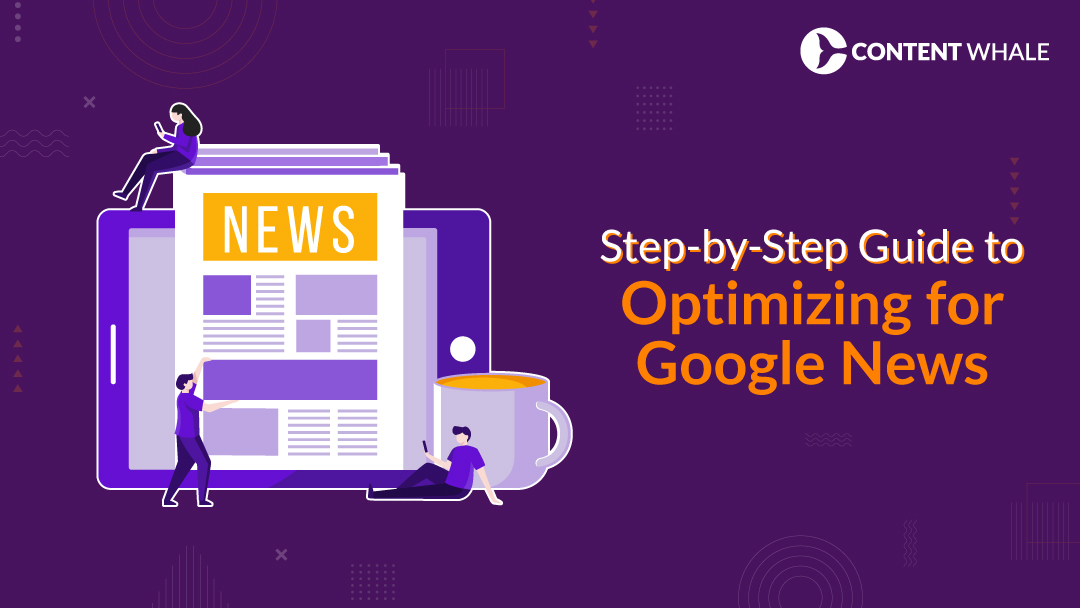Quick Summary
Understanding the importance of content marketing for nonprofits is essential for connecting with audiences. This blog explores effective strategies and provides tips for creating engaging nonprofit content. Learn how to integrate nonprofit storytelling into your content creation for nonprofits and leverage digital marketing for nonprofits. Discover tools and resources to enhance your content strategy and implement best practices for measuring and optimizing your efforts.
Content marketing is a strategic approach focused on creating and distributing valuable, relevant, and consistent content to attract and retain a clearly defined audience.
For nonprofits, this means crafting stories and information that connect emotionally with supporters, donors, and volunteers.
Effective content marketing for nonprofits helps raise awareness, build trust, and drive action.
By leveraging various content forms and platforms, nonprofits can enhance their visibility, communicate their mission, and mobilize resources.
This blog explores how nonprofits can develop and implement successful strategies for content creation for nonprofits to maximize their impact.
Engaging content plays a pivotal role in connecting with your audience.
Through compelling nonprofit storytelling, organizations can highlight their successes and the difference they make in the community.
By integrating digital marketing for nonprofits into their strategy, nonprofits can reach a wider audience and drive meaningful engagement.
Let’s delve into the best practices and tips to make your nonprofit marketing strategy more effective.
Why Content Marketing is Essential for Nonprofits
Content marketing is vital for nonprofits to build awareness, engage supporters, and drive action. Here’s why it’s essential:
1. Building Awareness and Engagement
Content marketing for nonprofits helps raise awareness about your mission and activities.
Sharing informative and relevant content through blogs, social media, and newsletters keeps your audience informed and engaged.
Consistently posting engaging nonprofit content can attract new supporters and keep existing ones interested.
2. Establishing Authority and Credibility
Sharing expertise and success stories positions your organization as a leader in your field.
High-quality content, such as research reports, white papers, and educational articles, showcases your knowledge and commitment.
This nonprofit marketing strategy builds trust with your audience, making them more likely to support your cause.
3. Inspiring Action and Driving Donations
Effective nonprofit storytelling can inspire people to take action.
Sharing compelling stories about the impact of your work can motivate donors and volunteers.
Highlighting real-life examples of how contributions make a difference creates an emotional connection, encouraging more significant support.
4. Enhancing Volunteer Recruitment and Retention
Content that showcases volunteer experiences and achievements can attract new volunteers and retain current ones.
By highlighting personal stories and the positive outcomes of volunteer work, you foster a sense of community and purpose.
This type of content creation for nonprofits demonstrates the value of volunteer contributions and encourages ongoing involvement.
5. Leveraging Digital Marketing for Greater Reach
Incorporating digital marketing for nonprofits into your content strategy allows you to reach a broader audience.
Utilizing social media platforms, email marketing, and SEO techniques helps amplify your message and connect with potential supporters globally.
Digital marketing tools and analytics also provide valuable insights into what content resonates with your audience, enabling continuous improvement of your strategy.
Content marketing is a powerful tool for nonprofits.
By creating and sharing engaging nonprofit content, you can build awareness, establish credibility, inspire action, and enhance volunteer engagement.
Embracing digital marketing techniques further extends your reach and impact.
Developing a Content Marketing Strategy for Nonprofits

A well-defined strategy is the cornerstone of effective content marketing for nonprofits. Here’s how to develop a robust plan:
1. Identifying Your Target Audience
Understanding your audience is the first step.
Identify who your supporters are, including donors, volunteers, beneficiaries, and potential advocates.
Create detailed audience personas that encompass demographics, interests, motivations, and challenges.
This clarity helps tailor engaging nonprofit content that resonates and drives action.
2. Setting Clear Goals and Objectives
Establish specific, measurable, achievable, relevant, and time-bound (SMART) goals for your content marketing efforts.
Whether you aim to increase website traffic, boost social media engagement, raise funds, or recruit volunteers, clear objectives provide direction and help measure success.
3. Creating a Content Calendar
A content calendar is essential for maintaining consistency and organization.
Plan your content around key dates, events, and campaigns.
This schedule ensures a steady flow of content creation for nonprofits, aligning with your strategic goals.
Include various content types such as blog posts, social media updates, newsletters, and videos to keep your audience engaged.
4. Integrating Storytelling into Your Content Strategy
Nonprofit storytelling is a powerful tool that creates an emotional connection with your audience.
Share stories that highlight the impact of your work, featuring real people and tangible results.
Personal stories of beneficiaries, volunteers, and donors make your mission relatable and compelling.
Use storytelling techniques to craft narratives that inspire and mobilize support.
5. Leveraging Digital Marketing Tools
Incorporate digital marketing for nonprofits into your strategy to amplify your reach.
Utilize social media platforms, email marketing, and SEO to distribute your content widely.
Digital tools like Google Analytics, Hootsuite, and Mailchimp can help you track performance, schedule posts, and manage campaigns effectively.
6. Engaging Your Audience
Interaction is key to successful content marketing.
Encourage your audience to engage with your content through comments, shares, and feedback.
Respond promptly to foster a sense of community and show appreciation for their support.
User-generated content, such as testimonials and personal stories, adds authenticity and strengthens connections.
A strategic approach to content marketing for nonprofits involves understanding your audience, setting clear goals, planning your content, integrating storytelling, leveraging digital tools, and fostering engagement.
This comprehensive strategy helps nonprofits build lasting relationships and drive meaningful action.
Types of Content for Nonprofits

Creating diverse and engaging nonprofit content is key to a successful nonprofit marketing strategy.
Here are several types of content that can help you reach and inspire your audience:
1. Blog Posts and Articles
Blogging is a cornerstone of content marketing for nonprofits.
Regularly updated blog posts provide an opportunity to share in-depth information about your cause, success stories, industry insights, and expert opinions.
Well-written articles improve your website’s SEO and establish your nonprofit as a thought leader in your field.
2. Social Media Updates and Campaigns
Social media is a powerful tool for digital marketing for nonprofits.
Platforms like Facebook, Twitter, Instagram, and LinkedIn allow you to share updates, photos, and videos instantly.
Social media campaigns can mobilize supporters, increase engagement, and drive traffic to your website.
Use a mix of posts, stories, and live videos to keep your audience engaged.
3. Videos and Documentaries
Videos are highly engaging and can effectively convey your message.
Short clips, interviews, and documentaries showcasing your work can be shared across multiple platforms.
Videos highlight the human aspect of your mission, making nonprofit storytelling more impactful.
Consider creating behind-the-scenes videos, beneficiary stories, and event highlights to captivate your audience.
4. Infographics and Data Visualizations
Visual content like infographics makes complex information easy to understand. Use infographics to present statistics, success metrics, and impact reports.
Data visualizations can communicate your nonprofit’s achievements and goals in a visually appealing and digestible format.
This type of content creation for nonprofits is particularly effective for social media sharing.
5. Case Studies and Success Stories
Case studies and success stories provide detailed examples of how your nonprofit has made a difference.
Highlighting specific instances of your impact can build credibility and trust with your audience.
These stories are powerful tools for nonprofit storytelling, as they provide tangible proof of your organization’s effectiveness and the real-life impact of donations and volunteer efforts.
6. Email Newsletters
Email newsletters keep your supporters informed and engaged.
Regular updates on your nonprofit’s activities, upcoming events, and success stories can strengthen relationships with your audience.
Personalize your newsletters to address different segments of your audience, ensuring relevant and engaging nonprofit content that resonates with each group.
By utilizing a variety of content types, nonprofits can create a comprehensive nonprofit marketing strategy that engages, informs, and inspires their audience.
This diverse approach ensures that your message reaches a wide audience and drives meaningful action.
Tips for Creating Engaging and Impactful Content

Creating content that resonates with your audience is essential for effective content marketing for nonprofits.
Here are some tips to help you develop engaging nonprofit content that drives impact:
1. Focus on Storytelling and Emotional Connection
Nonprofit storytelling is a powerful way to connect with your audience.
Share personal stories that highlight the challenges and successes of individuals or communities you support.
Use narratives that evoke emotions and illustrate the human side of your mission. This approach makes your content more relatable and compelling.
2. Use Visuals to Enhance Your Message
Incorporate high-quality images, videos, and graphics to make your content visually appealing.
Visuals help capture attention and convey messages quickly. Infographics, photo galleries, and short video clips can significantly boost engagement.
Tools like Canva and Adobe Spark are excellent for creating professional-looking visuals for your content creation for nonprofits.
3. Highlight Real-Life Impact and Success Stories
Showcase specific examples of how your organization’s work has made a difference.
Highlighting real-life impact builds credibility and trust with your audience.
Success stories, testimonials, and case studies provide tangible evidence of your nonprofit’s effectiveness and the value of support from donors and volunteers.
4. Encourage User-Generated Content and Testimonials
User-generated content adds authenticity to your messaging.
Encourage your supporters to share their experiences, stories, and photos related to your cause.
Testimonials from beneficiaries, volunteers, and donors can strengthen your narrative and provide diverse perspectives.
This type of engaging nonprofit content fosters a sense of community and involvement.
5. Optimize Content for SEO and Social Sharing
To maximize the reach of your content, optimize it for search engines and social media platforms.
Use relevant keywords, such as digital marketing for nonprofits, in your titles, meta descriptions, and throughout your content.
Incorporate social sharing buttons and compelling calls-to-action to encourage your audience to share your content.
Tools like Yoast SEO can help you optimize your content effectively.
6. Keep Content Consistent and Relevant
Maintain a consistent posting schedule to keep your audience engaged.
Regular updates help build a loyal following and keep supporters informed about your activities.
Ensure your content is relevant and timely, addressing current events, trends, and issues related to your cause.
By focusing on storytelling, using visuals, highlighting real-life impact, encouraging user-generated content, optimizing for SEO, and maintaining consistency, you can create engaging nonprofit content that effectively supports your nonprofit marketing strategy.
Tools and Resources for Nonprofit Content Marketing

Utilizing the right tools and resources is vital for effective content marketing for nonprofits.
These tools can streamline your processes, enhance your nonprofit marketing strategy, and help you create engaging nonprofit content. Here are some valuable tools and resources:
1. Canva
Canva is an intuitive design tool that allows you to create professional-quality graphics, infographics, social media posts, and other visual content.
Its user-friendly interface and vast library of templates make it ideal for content creation for nonprofits.
Whether you need a poster for an event or an infographic to explain your impact, Canva can help you create visually appealing materials quickly.
2. Hootsuite and Buffer
Managing multiple social media accounts can be challenging.
Hootsuite and Buffer are social media management platforms that allow you to schedule posts, monitor engagement, and analyze performance across different social networks.
These tools help you maintain a consistent posting schedule and ensure your digital marketing for nonprofits reaches a broad audience.
3. Google Analytics
Understanding how your content performs is essential for optimizing your strategy.
Google Analytics provides detailed insights into your website traffic, user behavior, and content effectiveness.
By analyzing this data, you can make informed decisions about what content resonates with your audience and how to improve your nonprofit marketing strategy.
4. Grammarly
Clear and error-free writing is crucial for maintaining credibility.
Grammarly is a writing assistant that checks your content for grammar, spelling, and punctuation errors.
It also offers suggestions for improving readability and style, ensuring your engaging nonprofit content is polished and professional.
5. Mailchimp
Email marketing is a powerful tool for nonprofits. Mailchimp allows you to create, send, and analyze email campaigns.
Its features include customizable templates, audience segmentation, and performance tracking.
Email newsletters can keep your supporters informed and engaged, enhancing your content marketing for nonprofits efforts.
6. Content Whale
Content Whale is an affordable content writing service that provides high-quality, customized content for nonprofits.
Whether you need blog posts, articles, social media content, or email newsletters, Content Whale’s team of experienced writers can help you produce engaging nonprofit content tailored to your specific needs.
This service is particularly useful for nonprofits looking to outsource content creation while maintaining high standards of quality.
7. Free and Other Low-Cost Resources
Numerous free and low-cost resources can support your content creation for nonprofits.
Websites like Unsplash and Pixabay offer high-quality stock photos for free. Platforms like WordPress provide free or affordable options for hosting your blog or website.
Additionally, online courses and webinars from platforms like Coursera and HubSpot Academy offer valuable training in content marketing and digital marketing for nonprofits.
Using these tools and resources can significantly enhance your nonprofit’s content marketing efforts.
From designing compelling visuals to managing social media and analyzing performance, these tools help you create and distribute engaging nonprofit content effectively.
Measuring and Optimizing Your Content Strategy
Measuring and optimizing your content strategy is essential for maximizing the impact of your content marketing for nonprofits.
By tracking key metrics and refining your approach, you can ensure that your efforts are effective and aligned with your goals. Here’s how to do it:
1. Key Metrics to Track
To understand how well your nonprofit marketing strategy is performing, monitor these key metrics:
- Engagement: Track likes, shares, comments, and other interactions on your social media posts and blog articles. High engagement indicates that your content resonates with your audience.
- Reach: Measure the number of people who see your content. This includes impressions on social media and page views on your website. Increasing reach helps raise awareness of your nonprofit’s mission.
- Conversions: Monitor actions taken by your audience, such as donations, volunteer sign-ups, or event registrations. These conversions are direct indicators of your content’s effectiveness in driving action.
- Bounce Rate: Analyze the percentage of visitors who leave your website after viewing only one page. A high bounce rate may suggest that your content isn’t engaging enough to keep visitors interested.
2. Using Data to Refine and Improve Your Strategy
Regularly reviewing your analytics helps identify what works and what doesn’t.
Use tools like Google Analytics, Hootsuite, and Mailchimp to gather data on your content’s performance.
Look for patterns and trends to understand which types of engaging nonprofit content are most effective.
3. A/B Testing Different Content Formats and Messages
Experiment with different content formats, headlines, images, and calls-to-action to see what resonates best with your audience.
A/B testing allows you to compare two versions of a piece of content to determine which one performs better.
This method can help optimize your content creation for nonprofits by refining your approach based on real-world data.
4. Gathering Feedback from Your Audience and Stakeholders
Direct feedback from your audience and stakeholders is invaluable.
Use surveys, social media polls, and direct interactions to gather insights into what your supporters think about your content.
This feedback can guide adjustments and improvements to your nonprofit storytelling and overall strategy.
By tracking key metrics, using data to refine your approach, conducting A/B testing, and gathering feedback, you can continuously improve your digital marketing for nonprofits.
These practices ensure that your content remains relevant, engaging, and effective in achieving your nonprofit’s goals.
Conclusion

Content marketing is an essential tool for nonprofits to connect with their audience, build trust, and drive action.
By developing a strategic approach to content marketing for nonprofits, you can create engaging nonprofit content that resonates with your supporters.
Focus on nonprofit storytelling to share impactful stories, use various digital tools to streamline your efforts, and continuously measure and optimize your strategy for the best results.
Utilize the tips and resources discussed to enhance your nonprofit marketing strategy and maximize your outreach.
Remember to stay adaptable and responsive to your audience’s needs, ensuring your content remains relevant and compelling.
Starting today, implement these strategies to see a significant positive effect on your nonprofit’s mission and goals.
Your efforts in content creation for nonprofits can lead to increased awareness, support, and meaningful engagement through effective digital marketing for nonprofits.
For professional assistance with your content needs, consider partnering with Content Whale to create high-quality, customized content that drives impact for your nonprofit.
FAQs
Why is content marketing important for nonprofits?
Content marketing for nonprofits is essential because it helps raise awareness, build trust, and drive action.
By creating and sharing engaging nonprofit content, nonprofits can effectively communicate their mission, showcase their impact, and connect emotionally with supporters.
This approach fosters a loyal community and encourages donations, volunteerism, and advocacy.
What types of content are most effective for nonprofit organizations?
Effective content types for nonprofits include blog posts, social media updates, videos, infographics, case studies, and email newsletters.
Blog posts and articles provide in-depth insights, while social media updates and videos offer quick, engaging content.
Infographics simplify complex data, and case studies showcase real-life success stories.
Email newsletters keep supporters informed and engaged.
How can nonprofits measure the success of their content marketing efforts?
Nonprofits can measure success by tracking key metrics such as engagement (likes, shares, comments), reach (impressions, page views), conversions (donations, sign-ups), and bounce rate.
Tools like Google Analytics, Hootsuite, and Mailchimp provide valuable insights into content performance, helping nonprofits refine their nonprofit marketing strategy and improve effectiveness.
What are some affordable tools and resources for nonprofit content marketing?
Affordable tools for content creation for nonprofits include Canva for graphic design, Hootsuite and Buffer for social media management, Google Analytics for performance tracking, Grammarly for writing assistance, and Mailchimp for email marketing.
Additionally, platforms like Unsplash and Pixabay offer free stock photos, while WordPress provides affordable website hosting options.
How can storytelling enhance a nonprofit’s content marketing strategy?
Nonprofit storytelling enhances content marketing by creating an emotional connection with the audience.
Sharing personal stories of beneficiaries, volunteers, and donors humanizes the cause and illustrates the real-life impact of the nonprofit’s work.
This approach makes the content more relatable and compelling, driving greater engagement and support.





